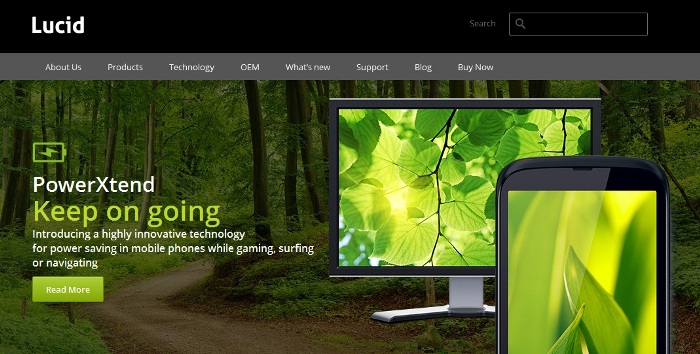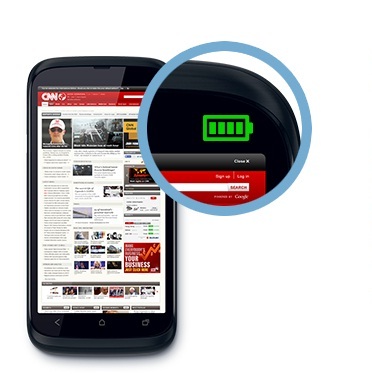Can You Really Boost Your Smartphone’s Power Efficiency with a Software Tool?
No, we’re not talking about power-saving applications that disable certain functions to conserve battery juice. The phrase “smartphone’s power efficiency enhancing software” here refers to algorithms employed to optimize hardware performance without sacrificing function – just like what the PowerXtend software from LucidLogix is claiming to offer. These software were initially publicized in a CES 2014 press release in January. The idea was mainly to extend cellphone battery life through software tools. There were two of these software announced on the press release: PowerXetnd and GameXtend. LucidLogix, however, actually has four of these software-based battery enhancing tools. The other two are NavXtend and WebXtend. All of these software promise significant improvements in battery longevity, from 25% to 50%.
-
PowerXtend – Developed to optimize CPU/GPU performance to reduce power consumption. It has an API that enables control over the user experience trade-off or the level of performance reduction allowed in lieu of lower power consumption.
-
GameXtend – This software solution claims to yield up to 50% more battery longevity when playing games on mobile phones. It directs the right graphic processor load to efficiently match game requirements.
-
NavXtend – Created for navigation functions, NavXtend is said to reduce power consumption by monitoring the GPS function and balancing load and power requirements. The software claims to extend battery time by up to 25%.
-
WebXtend – Claiming to provide up to 25% longer battery time, this software is intended to optimize the resources used while surfing the Internet.
We have to admit that we were some of the many who doubted this technology. It’s somewhat incredible for some software developer to claim that they can improve smartphone power efficiency beyond the optimization chip makers are doing. Qualcomm, for instance, has been producing power efficient chips (the Snapdragon line in particular) and these chips become more efficient in every iteration. Why would they not maximize the optimization if further optimizations are still possible? How could it be possible for some third party software company to still be able to pull out more efficiency from components that are supposed to have already been optimized?
The Proof in Galaxy S5?
Just recently, Samsung released their newest flagship smartphone, the Galaxy S5. Although unimpressive in looks, the fifth generation of the Galaxy S line of devices brings something consumers will most unlikely treat as a gimmick: power efficiency. The 2014 Galaxy flagship is touted to be highly power efficient as proven by a number of tests like the battery test conducted by PhoneArena and GSMArena.
![By pestoverde (Flickr: Samsung Galaxy S5) [CC-BY-2.0 (http://creativecommons.org/licenses/by/2.0)], via Wikimedia Commons](https://techtheday.com/wp-content/uploads/2014/04/Samsung-Galaxy-S5.jpg)
By pestoverde (Flickr: Samsung Galaxy S5) [CC-BY-2.0 (http://creativecommons.org/licenses/by/2.0)], via Wikimedia Commons
Despite having a relatively small 2800 mAh battery, the Galaxy S5 is shown to outlast a number of devices with bigger batteries, including the Sony flagship Xperia Z2 with a 3200 mAh battery pack and the LG G2 with its 3000 mAh power juicer. The Galaxy S5 has specs similar or even more powerful than what the competition offer. It has a bright and extremely sharp Super AMOLED display with a full HD resolution (1080×1920), a 2.5GHz S801 processor from Qualcomm, a 4K video capable camera, 2GB of RAM, a loud loudspeaker, and a full range of connectivity options. All of these are at par or even better than the current crop of flagship smartphones on the market but they are impressively more-than-adequately supported by the 2800 mAh battery. The Galaxy S5, as the PhoneArena test showed, has nearly twice the battery time of the Xperia Z1 which packs a 3000 mAh power source.
The stellar battery performance could be attributed to the LucidLogix software-based battery enhancement technology. Samsung was reported to have inked a deal with LucidLogix to be able to access the patent-pending power efficiency augmenting tech.
Genuine Battery Performance or Advertising?
Still, it’s not really that easy to believe that power efficiency can be achieved by a mere software tool without sacrificing performance. More tests are still needed to verify if LucidLogix’s tech really works without side effects and in the long run, without compromising hardware performance and the overall user experience. More tests are still needed to verify if the battery boost is just optimized to act according to what battery-testing scripts are assessing. It is worth pointing out that PhoneArena uses a script to test battery life, not actual device use. It will be interesting to find out what other companies have to say about the power efficiency enhancing software tools of LucidLogix.
Software-based battery life enhancement is indeed very promising. However, for now, we still prefer keeping our skepticism until more tests by other credible review sites are completed. The battery technology developed by Stanford University inventors is still the more credible solution to extending battery life. Moreover, it is worth noting that Samsung has not actually verified whether or not the LucidLogix tech has really been implemented in the Galaxy S5.

